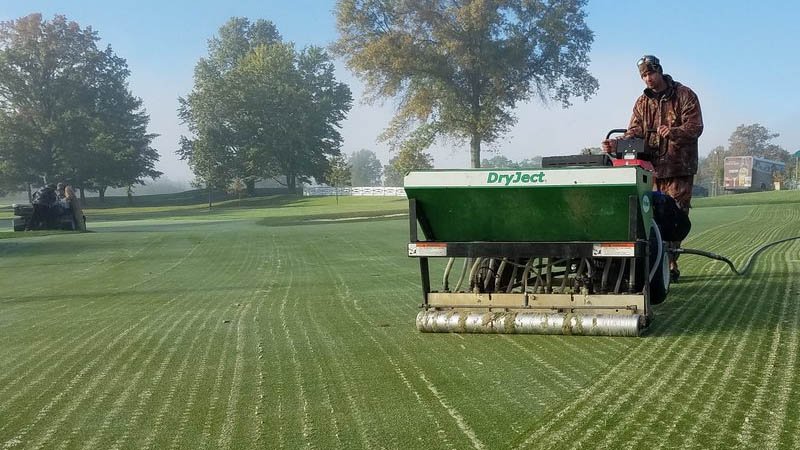
DryJect soon will have a solution for superintendents who do not have access to or the budget for kiln-dried sand during aerification and topdressing.
Through extensive research and development, DryJect has engineered a special hopper configuration that includes rotating agitation and staged screening with vibratory assistance to assure flow of damp and even wet sand through its all-in-one aerification and topdressing system.
This new capability will be available through select DryJect regional service centers by October, with most outlets coming online through winter and spring of next year.
Field testing revealed that damp and wet sand applied through the new hopper was distributed at a rate of about 90 percent compared with dry sand. The 10 percent discrepancy is largely from that same percentage of holes not receiving any sand. This is significant because 90 percent of the holes with sand were filled just as full as the kiln-dried process. For comparison, a 3-inch-by-2-inch spacing at an approximate depth of 4 inches with kiln-dried sand will deliver 5.6 cubic feet of sand per 1,000 square feet. Using damp or wet sand that has not been kiln dried will deliver 5 cubic feet.
This new technology now makes the Dry-Ject process available in parts of the U.S. and Canada with limited or no access to kiln-dried sand. It also can help reduce the cost of aerification and topdressing procedures since damp or wet sand is less expensive than kiln-dried.

